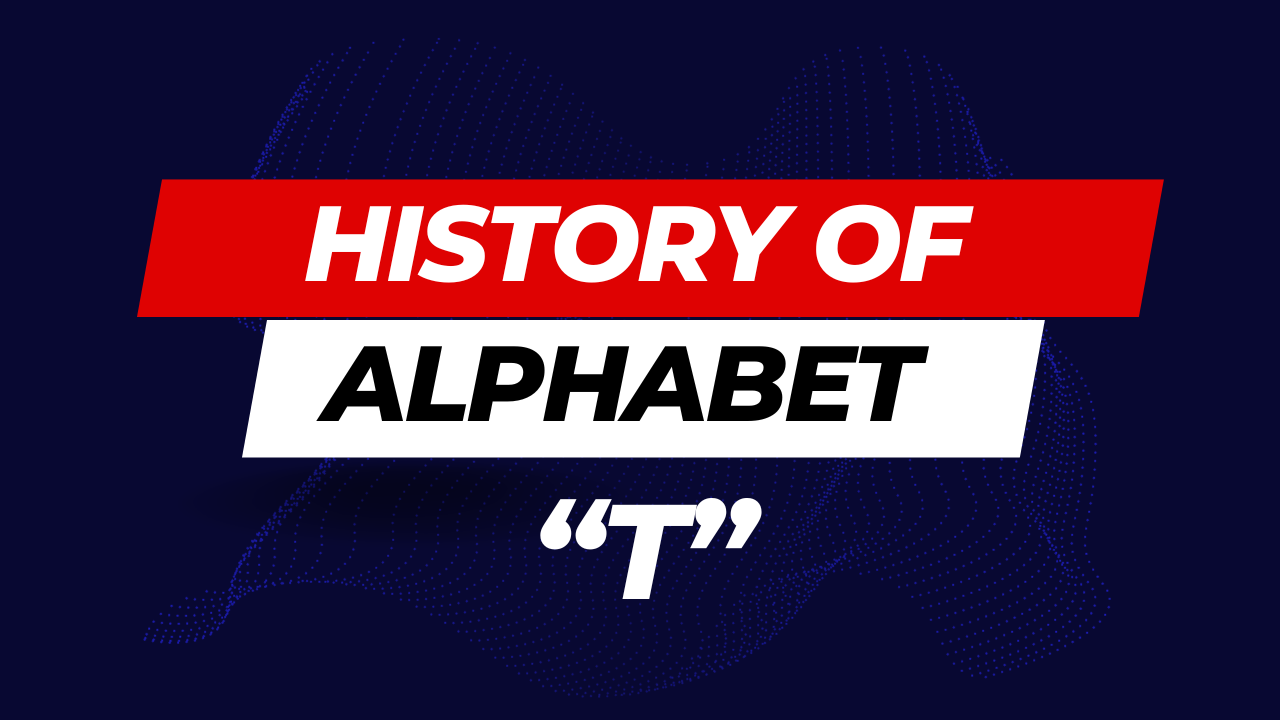In the vast tapestry of linguistic evolution, the History of Alphabet "T" stands as a testament to human ingenuity and communication's transformative power. This article delves into the intricate origins, cultural significance, and evolution of the letter "T," shedding light on its journey from ancient civilizations to contemporary digital platforms.
The Birth of "T": Ancient Origins
The tale of "T" finds its roots in the ancient Phoenician script, where a symbol resembling a cross represented this consonant. This primitive mark, evolving through time and cultures, laid the foundation for numerous scripts worldwide.
"T" in Hieroglyphics: Decoding Ancient Egyptian Scripts
In the mesmerizing world of Egyptian hieroglyphics, "T" manifested as a loaf symbolizing life. Hieroglyphic inscriptions adorned temples and tombs, etching the letter's significance deep into the annals of history.
Medieval Manuscripts: The Elegance of Calligraphy
During the Middle Ages, scribes meticulously crafted "T" with quills, inks, and parchment. The intricate calligraphy showcased the aesthetic appeal of this letter, gracing illuminated manuscripts and ancient texts.
Renaissance and Typography: The Printing Revolution
With the advent of printing, the letter "T" found its way into movable typefaces, revolutionizing mass communication. Gutenberg's press propagated knowledge, making "T" an integral part of printed literature across Europe.
"T" in Modern Alphabets: A Global Phenomenon
In the modern era, "T" seamlessly integrated into various writing systems, transcending borders and languages. Its versatility made it a cornerstone of communication, from English and Spanish to Cyrillic and Arabic scripts.
The Symbolic Significance of "T":
Beyond its linguistic utility, "T" often carries symbolic weight. In mathematics, it represents time; in music, it denotes a tone. Its symbolism extends to science, where "T" symbolizes temperature, emphasizing its multifaceted significance.
FAQs: Unraveling Mysteries of "T":
What is the earliest known use of the letter "T" in written language? The letter "T" dates back to the Phoenician alphabet, used as a cross-like symbol around 1200 BCE.
How did "T" evolve in different languages? The evolution of "T" in languages is diverse; it transformed into various shapes and sounds, adapting to the phonetic structures of different cultures.
Is there a connection between the letter "T" and ancient symbolism? Yes, "T" symbolizes life in Egyptian hieroglyphics and holds diverse meanings in different cultural contexts, showcasing its symbolic richness.
Can you provide examples of famous literary works where "T" plays a significant role? Certainly, works like Shakespeare's "Romeo and Juliet" and Dickens' "Great Expectations" accentuate the poetic and narrative charm of the letter "T."
How has the pronunciation of "T" evolved over centuries? The pronunciation of "T" has undergone shifts, from a hard consonant in ancient languages to softer sounds in contemporary speech, reflecting linguistic evolution.
Is "T" significant in contemporary digital communication? Absolutely, "T" remains pivotal in digital communication, appearing in emails, texts, and social media posts, preserving its relevance in the digital age.
Conclusion:
The History of Alphabet "T" unveils a rich tapestry of human communication, tracing its evolution from ancient symbols to contemporary scripts. Through cultural epochs and technological advancements, "T" has persisted as a beacon of expression, embodying the essence of human connection through language.



.png)
.png)
0 Comments